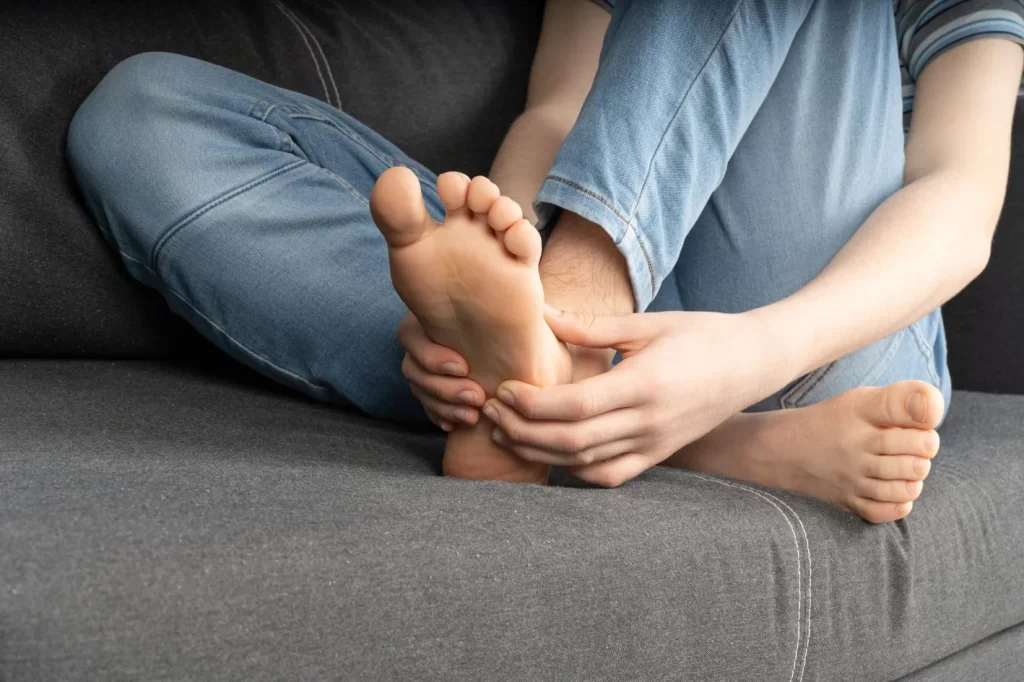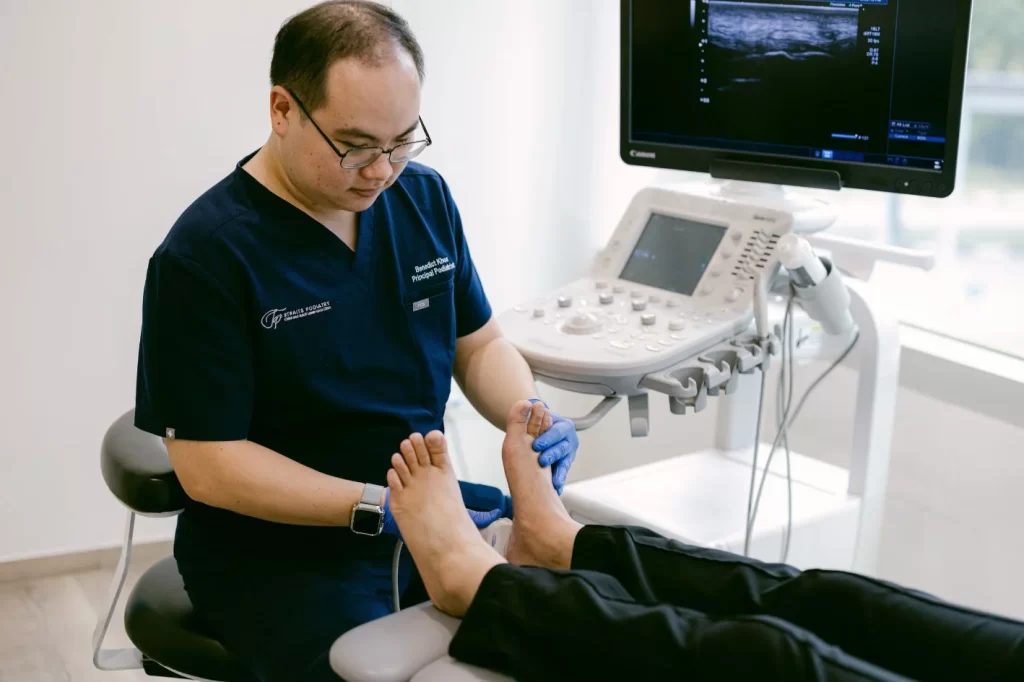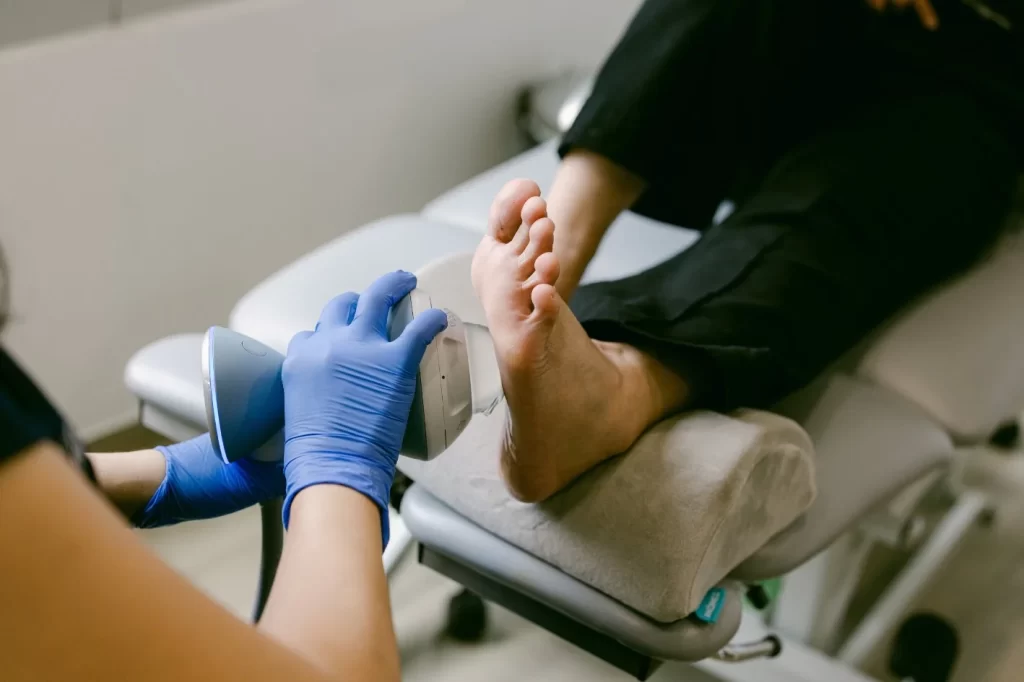Conditions >>
You’re enjoying your daily walks and suddenly, a sharp stabbing or pulling pain hits right under your arch. You thought this would go away on its own. But day after day, the pain is turning your pleasant walk along the East Coast Park into a painful ordeal, literally. Now, at this stage, most people start to frantically Google, only to find different information and solutions, which aren’t always helpful. And that’s because arch pain can be due to multiple causes, considering that there are four layers of structures under the arch.
The best way to appreciate the intricate structure of the foot is to look at it like a Roman arch. With its keystone in place, the structure is so stable that it can sustain heavy loads without collapsing.
Our foot arch is built similarly, except that it’s composed of bones, ligaments, tendons, and muscles. They work together to form that stable platform that supports our body weight and absorbs the shock of every step. Our arch also helps to bridge and transfer forces from the heel to the toe when we move. Therefore, if any component of this structure is compromised, the result is often pain when we walk.

Whilst the name already highlights the main symptom you get, arch pain can also manifest in many ways. Some people may experience a pulling pain, particularly during propulsion, when their foot is pushing them forward. Occasionally, some swelling can also be seen at the innermost side of the arch.
Some tend to feel a sharp stabbing pain when they take their first step upon waking up. This pain is often significant enough to make you limp for the next few minutes, and totally spoils your morning. It can also happen when you are getting up after a long meeting, making you feel embarrassed in front of your colleagues.
Some others may experience a splitting or tearing sensation right under the middle of the foot when walking. That may not happen at every step, but when it happens, it’s significant enough to make you jump and stop moving for a while.
Less commonly, some may also feel numbness or a tingling sensation along with the pain. The sensation can either travel down to the toes or up towards the leg, and can worsen when wearing tight shoes as well.
So, why are the symptoms so varied? Again, that is because your arch pain can stem from a variety of root causes.
If any of the above symptoms are hitting the spot, it’s time to know why your arch is unhappy. In a concrete jungle like Singapore, most people don’t wear shoes that are cushioned enough, or they overtrain on hard, unforgiving surfaces for their beloved sports. Over time, they start to develop conditions that give rise to the pain in their arch, such as:

It’s now clear that arch pain is a result of an overuse injury or inflammation of the structures in the region. But before we discuss the management plan, we need to identify the factors that put you at risk of developing it.
What Stresses The Arch of the Foot?
Who Carries Higher Baseline Risk?
Given that the symptoms and causes are now well understood, the approach to management becomes clear. Firstly, we need to reduce the stress on the arch and allow the pain to settle. Next, we have to make changes to your lifestyle choices to prevent recurrence. A podiatrist will assess your condition and recommend a care plan that not only aligns with your goals but also progresses towards achieving them.
Start with steps to reduce stress and relieve pain:
Next, protect your feet by cutting down the forceful impact on each step:
If your case is chronic and not responding to simple measures, you should consider advanced treatment options:
The key to avoiding pain is always to take preventive measures. Start by refreshing all your worn-out shoes and develop the habit of wearing soft slippers at home. Investing in new shoes is far more cost-effective than investing in treatments later. Alternate between high- and low-impact exercises to avoid overtraining. Importantly, spend at least 10 to 15 minutes mobilising and stretching your hamstrings, calves, and feet after an intense workout. And finally, work towards a healthier weight to reduce the stress on your feet. Adopting these measures will help you effectively lower your risk of foot injuries.

When arch pain in your foot is holding you back from activities you love, it is no longer a minor inconvenience. The good news is that help is readily available in Singapore. At Straits Podiatry, we will diagnose the cause of your pain, understand your lifestyle, and determine the reasons leading to it.
From there, we will tailor our management plan to your specific needs. This will include footwear recommendations, addressing your biomechanics using uniquely designed custom insoles, and practical exercises that you can do at home. If necessary, we will also discuss the use of technology, such as ESWT, to comprehensively manage your condition.
Enquire today by speaking with our team, or book a consultation for a detailed assessment to help you regain your confidence and move comfortably again.
The most common cause of foot arch pain is plantar fasciitis. This condition involves inflammation of the plantar fascia, a thick fibrous band that supports the arch of your foot. It typically causes a sharp, stabbing pain in the heel or arch, which often strikes you on your first step in the morning.
Arch pain can affect anyone, children included. Men and women between the ages of 40 and 60 will have a higher risk of developing. Additionally, people who stand or walk for long hours at work also increase the likelihood. Finally, wearing shoes with poor cushioning, having a higher BMI, and reduced calf flexibility also add to the stress on your arch.
Yes. Arch pain is quite common among children, especially around their primary school age. The typical cause is hypermobility, where the foot joints are moving excessively, straining the muscles and tendons. Putting your child in supportive shoes helps control excessive joint movements and allows them to continue their sports.
Start by wearing well-cushioned shoes with arch support and avoid training barefoot. If you are into high-impact exercises, be sure to choose softer ground to reduce the impact on your feet. Additionally, consider taking more rest days and alternating your training with lower-impact activities. If these measures are not helping you, see a podiatrist to get a thorough assessment and advice.
You should see a podiatrist if your arch pain is severe, persists for more than a few days despite self-remedy, or if it is affecting your daily activities. It’s also important to seek professional care if you notice redness, swelling, or a change in your foot shape.